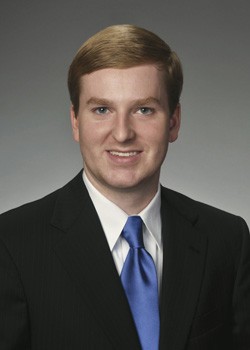Adopting a Strong Trademark Can Benefit Your Business (Opinion)
by July 20, 2012 1:47 pm 105 views

Whether a business is just getting started, is launching a new product or service, or entering a new market, the success of the new venture is often tied to effective branding through the use of trademarks. This is not surprising considering trademarks are how customers identify and distinguish the products offered by one business from those of its competitors.
A trademark can be the name of a business (e.g., Wal-Mart), a product or service (Big Mac), a slogan (Eat Mor Chikin) or even a symbol (the Nike swoosh).
While the competitive advantage offered by a trademark may be difficult to measure, its value should not be ignored.
Trademarks are categorized by the relative strength of the mark, which is the ability of the mark to identify the source of the product or service. Stronger marks are entitled to more rights and a broader scope of protection than weaker marks.
The strongest marks are “fanciful” marks, which are simply made-up words (Exxon for gasoline), and “arbitrary” marks, which have a meaning unrelated to the products or services sold under the mark (Apple for computers).
Somewhat less strong are “suggestive” marks, which require imagination to connect their meaning to the products or services (Greyhound for bus lines).
The weakest trademarks are “descriptive” marks, which directly describe some aspect of the goods or services sold under the mark (Frosted Mini-Wheats for cereal). Descriptive terms can only become enforceable trademarks after sufficient use that consumers have come to recognize them as brand names.
Finally, “generic” terms, which are simply the common names of the product or service, are incapable of ever becoming trademarks (Nails for nail salon services).
When deciding on a trademark, it may be tempting for a business to select a mark that describes the products or services being offered under the mark so that consumers can easily determine the products and services available. But these marks are not immediately protectable and, at best, will only be the subject of relatively narrow trademark rights. On the other hand, a fanciful, arbitrary or suggestive trademark provides much more protection for the trademark owner.
Once a business has decided on a proposed trademark, it is important to first “clear” the mark before using it. Clearing the mark refers to the process of determining whether there is a conflicting mark that would bar registration of the proposed mark or pose a risk of trademark infringement by using the proposed mark.
While businesses often rely on search engines to clear their marks, there is serious risk in doing so. These searches typically yield only the exact mark searched or marks containing the same words as those of the mark searched. However, a mark need not be identical or even contain identical words to infringe another’s mark.
There is also risk in relying on a business’ corporate registration issued by the Arkansas Secretary of State because a corporate registration does not grant the business the right to use that particular name as a trademark in Arkansas.
Once the proposed mark is cleared for use, the decision must be made whether to pursue federal registration of the mark. Common law trademark rights are automatically created through use of the trademark, even without a federal registration. However, common law trademark rights are limited to the geographical area where the mark has been used.
Federal registration of the mark offers several important benefits, including nationwide priority to use the mark from the date the application was filed, the right to display the ® symbol, which provides notice to others of the claim to rights in the mark, and the right to recover certain damages if successful in an infringement suit.
Through careful consideration in selecting and registering its trademarks, businesses can create and maintain a strong and recognizable brand that will endure for many years to come.
R. Blakely Glasgow is a patent attorney with the Wright Lindsey & Jennings law firm in Little Rock. He can be reached at [email protected].
